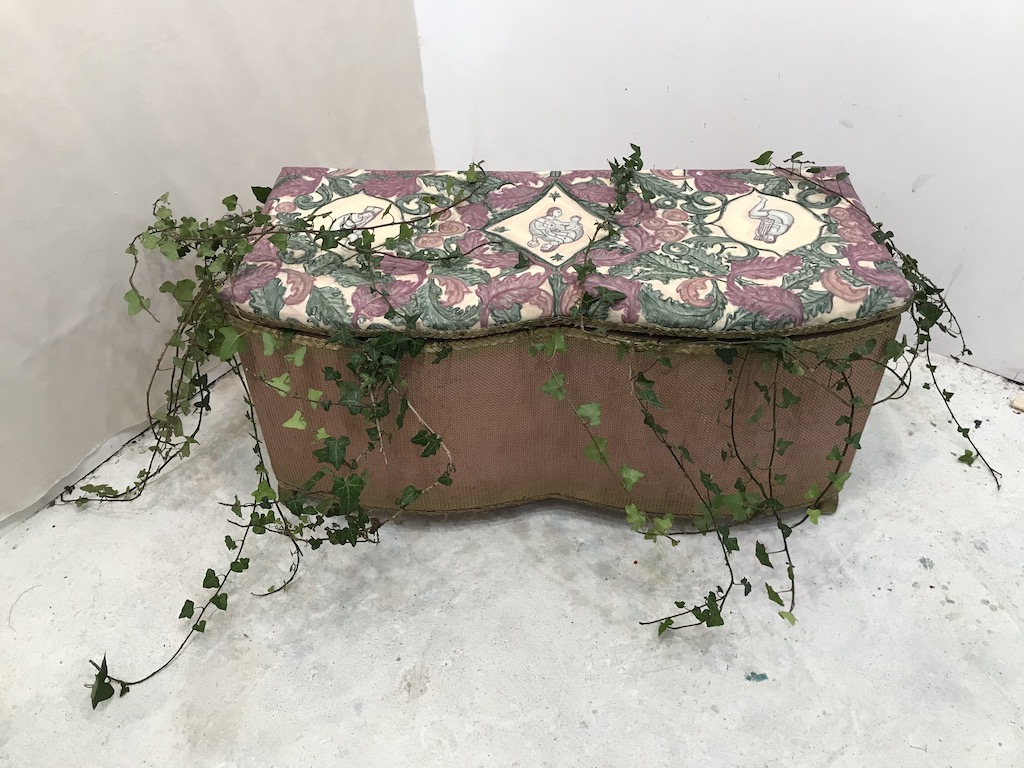
Now on show at Tremenheere Gallery.
Hope Chest (preparing for a greener future), found Lloyd Loom blanket box, canvas, acrylic and ivy, 1mx40x50cm
I found this old Lloyd loom blanket box abandoned in the street. I have always loved chance meetings with found objects and my studio is full of finds. I’ve painted a new seat cover for it that references to George Frederick Watts’ ‘Hope’ painting of 1885.
In 1886 Watts’ painting of a woman, and a lyre with only one string entitled ‘Hope’ was a huge favourite and much copied and replicated – even by Watts. Forgotten now, I wanted to revive this historical popular imagery with a humorous twist as I have painted two versions one with a single string, one with a happy musician with a lyre with all its strings, surrounded by a corrupted William Morris ‘Agapanthus’ pattern.
The ‘hope chest’ (trousseau, bottom drawer or ‘glory box’) is a box in which historically young women collected items of clothing and household linen in anticipation for their future. Using a recycled object in combination with natural forms (indestructible ivy that will continue to grow out from the box and around the ‘hope chest’) the work aims to represent human nature and experience – as well as hope for the future.
After much thought I’ve decided that the box cannot be opened to reveal it’s contents. I like the idea that curiosity and wonder of the unseen fuels our imagination and unlike a Pandora’s box (although we know research has revealed that this was a much used mistranslation as it was actually a jar ) the contents will remain safely within. Happy to reveal that the contents of the box will be ‘good’ things.. things that relate to preparation for a future life (like a Hope chest or bottom drawer), things that forward thinking women might keep handy for a better future caring for others and the world around them. I will leave it up to your imagination as to what those things are, hoping that the work will presage ecological hope and care for the world around us, and the people in it.
Delpha Hudson, October 2023
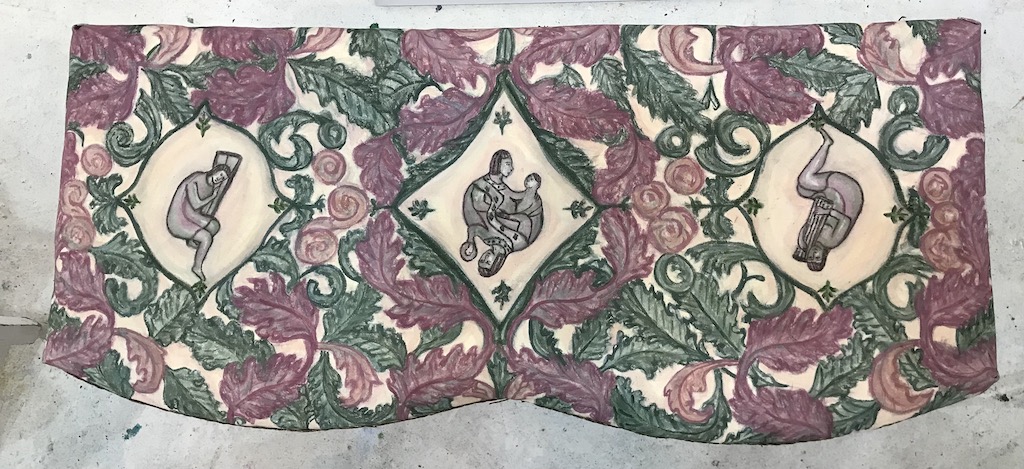
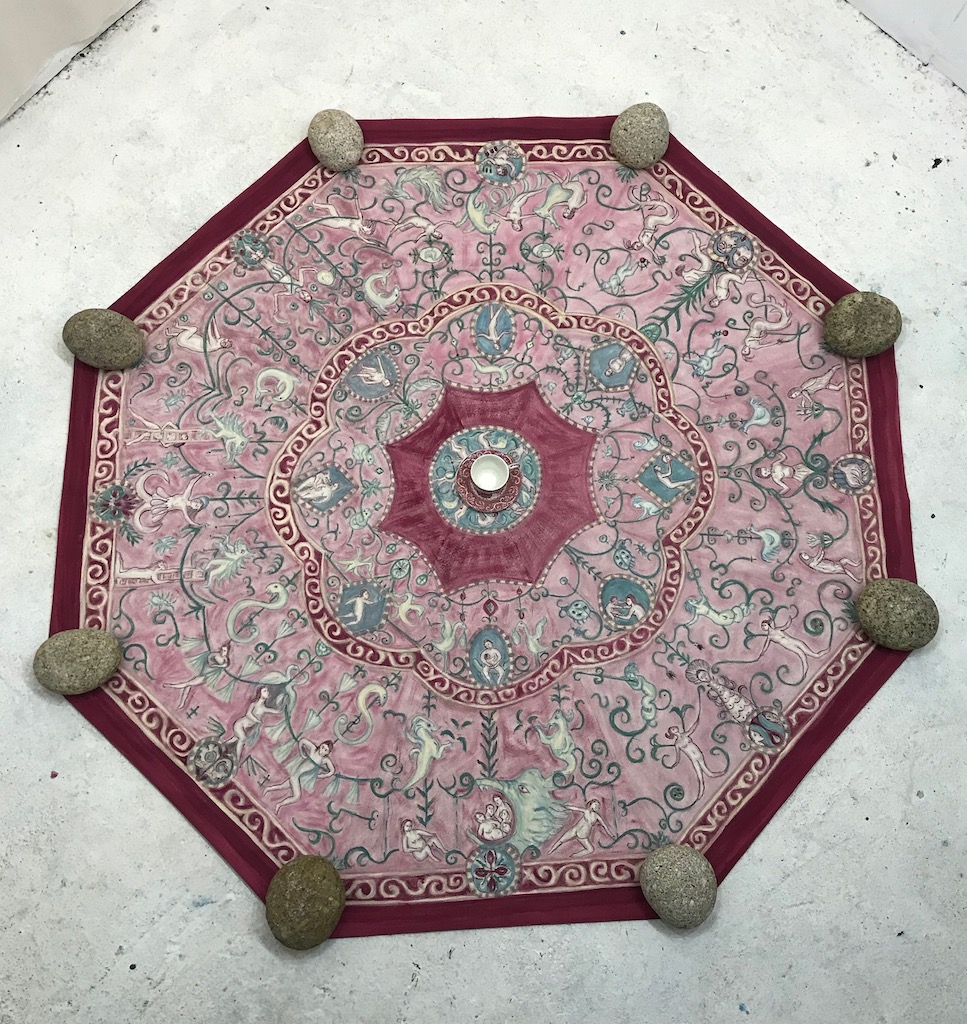
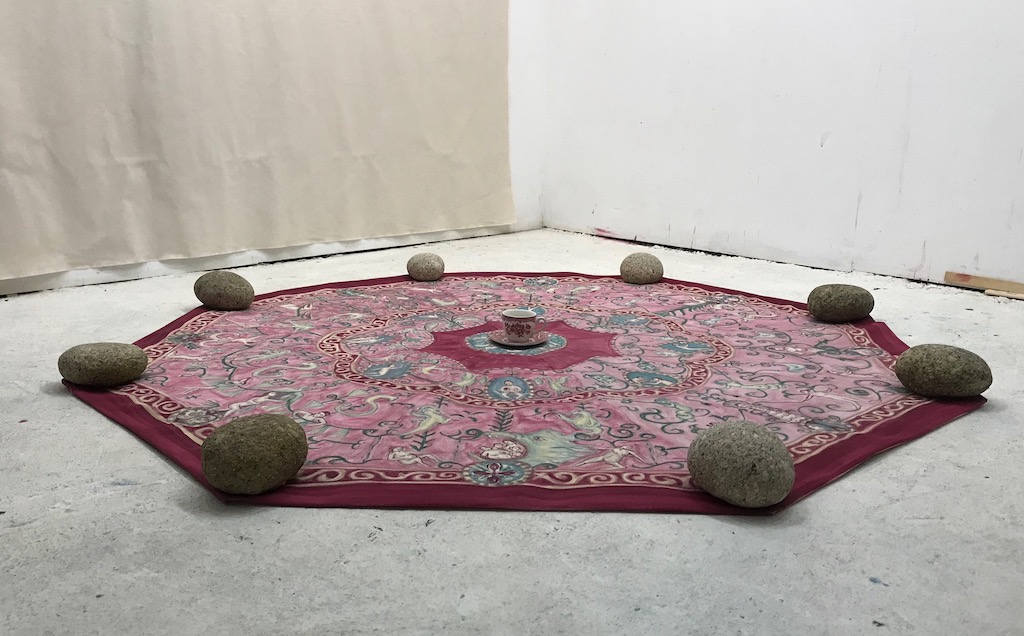
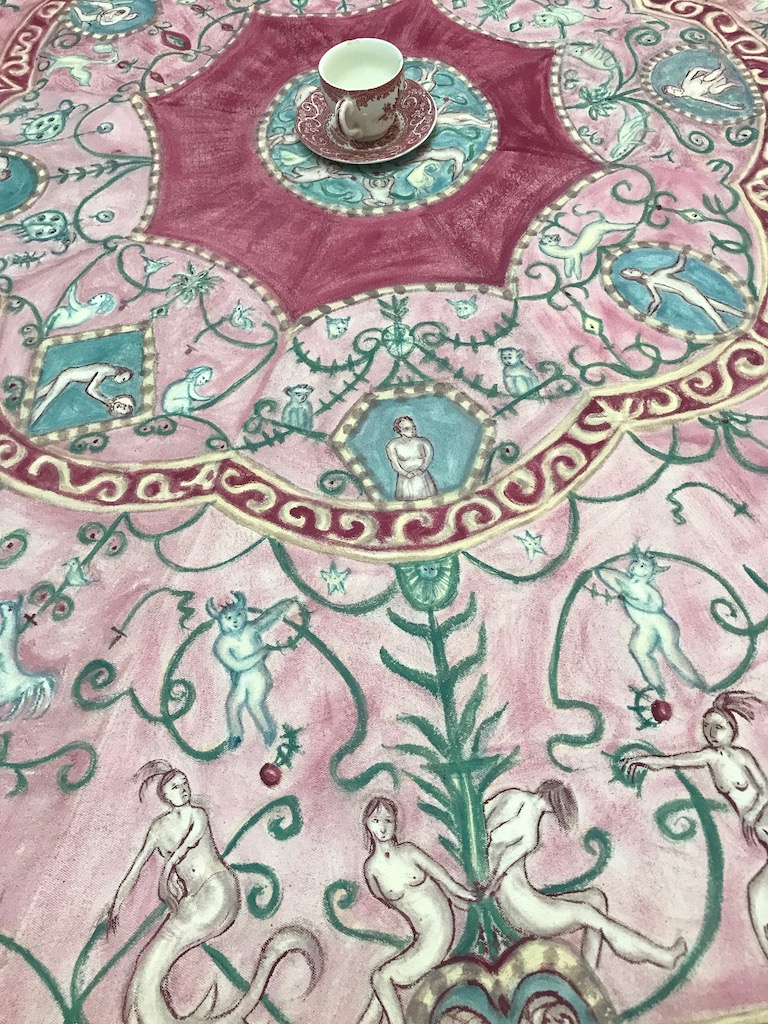
Writing about As above, so below, painted canvas carpet installation with Cornish granite egg stones and tea cup
The title is an axiom that paraphrases an ancient verse of the emerald tablet Hermetic text from the 8th century. In it’s medieval latin form:
Quod est superius est sicut quod inferius, et quod inferius est sicut quod est superius.
(That which is above is like to that which is below, and that which is below is like to that which is above).
There is no one possible interpretation because as with all historical texts it has been reinterpreted many times. The verse initially was assumed to be a reference to the effects of celestial mechanics upon terrestrial events (eg the moon upon the tides). The phrase was used by scholars and philosophers (Swedenborg,.William W Atkinson ) to create a hermetic principle of ‘correspondences’ that connected various planes of Being and Life.
Helena P. Blatavsky founder of the Theosophical Society in 1975 wrote extensively about it and created some of the the earliest examples of the phrase as an independent axiom. I’m interested in the way she used it as a way of understanding connectivity throughout time and history:
‘There is no prominent character in all the annals of sacred or profane history whose prototype we cannot find in the half-fictitious and half-real traditions of bygone religions and mythologies. As the star, glimmering at an immeasurable distance above our heads, in the boundless immensity of the sky, reflects itself in the smooth waters of a lake, so does the imagery of men of the antediluvian ages reflect itself in the periods we can embrace in an historical retrospect. “As above, so it is below”. That which has been, will return again….’
Using the phrase as a way of understanding the cyclical nature of human symbolism (and belief) is fascinating. Its relationship to the constant re-imaging of the relationship between man and the natural world evokes age-old connections between humans and their efforts to by mirror the world around them and thereby express their relationship with the cosmos.
The painting’s octagonal shape represents the transition from the heavenly plane (circle) to the terrestrial plane (square), this is also known as ‘squaring the circle’. The octagon has manifold symbolic references in architecture and arcane belief. Invoking the law of infinite metaphor and connecting heaven and hell (above and below) ‘grotesque’ patterning is used to connect the natural world to domestic realms and picture the imaginary and invisible.
Grotesques are ornamental arrangements of arabesques with interlaced natural forms and fantastic human and animal figures usually set out in a symmetrical pattern around some form of architectural framework. Here they are used in a domestic form – a simulacra of the fireside rug. Patterns and figurations link women’s bodies to the natural world and home life, intending to sardonically represent microcosms of domesticity and care which are so essential to human life yet so undervalued in human history and culture. Engendering both curiosity and humour though beautiful monstrous imagery continues the tradition of grotesques as a crucial, potentially universal anthropological device that conceptualises alterity and change.
Cornish egg stones were used in pre-Christian times as a symbol of hope and renewal. A surreal domesticity hovers over the outside-in of this stone circle weighing down a ‘magic carpet’ so that it doesn’t fly away. Myth and humour is used in each section (or eighth) showing a cyclical story of women’s experience from puberty to maturity.
The natural world is full of contradictions, fusions and deformations, patterns are an attempt by human beings to create an ordering of reality. Patterning aims to create new symbolic and discursive evocations of connectivity between caring for the world around us and caring for each other.
Delpha Hudson, September 2023
Delpha has worked for many years with collections of small sculpture, often combining them in installations. Her project Small Promethean Acts created a sound & sculpture installation at Artcore Gallery, Derby in 2019
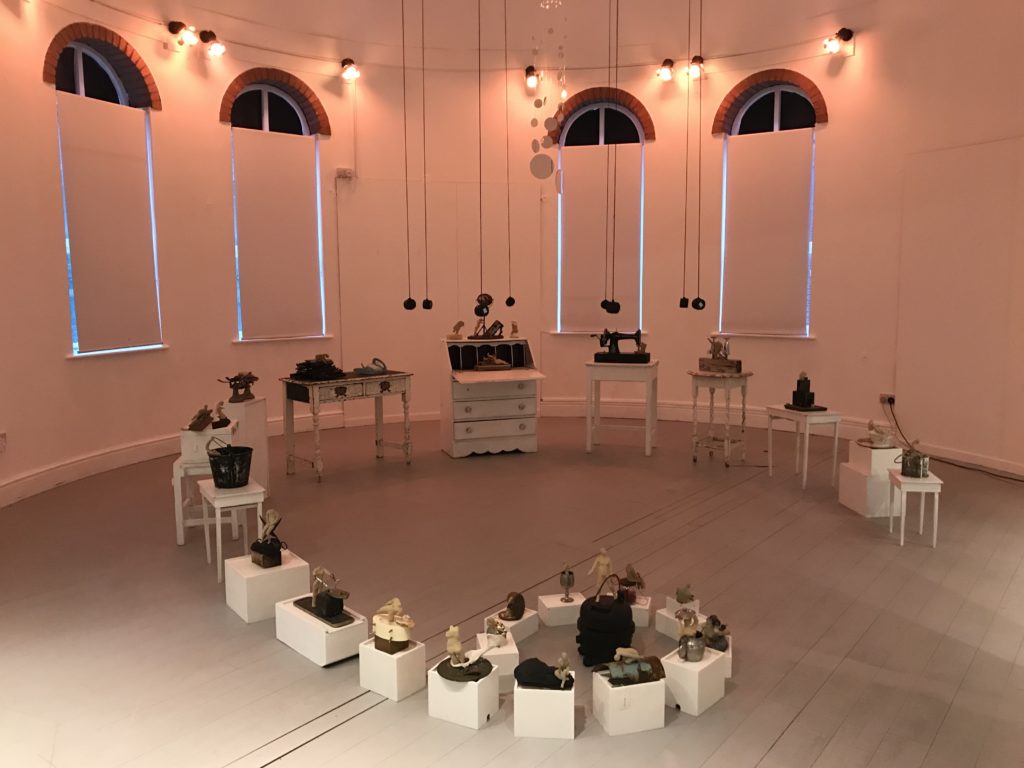
A hundred small un-monumental stoneware figures combined with found objects were made between 2017-19 They aimed to celebrate caring acts, engender empathy, and make equality possible. The sculptures displayed on furniture plinths were accompanied by a quiet hum of stories recorded from the public that could be heard from speakers hanging from the ceiling. The 2019 installation (shown) included stories collected from communities in Derby, describing an act of care performed for the ones they love.
You can listen to some of the stories here: Small Promethean Acts on Soundcloud
Combining them as an installation creates an immersive space for reflection on cultural and societal value place on domestic acts. It weaves stories and narratives between sculpture and sound, to celebrate and represent ‘home workers’ and carers. Creating visibility and voice for people who care, and work from home has the potential to change their sense of value, and this project aims to change the value of care in society.
Read more about small promethean acts project or read a description of the show
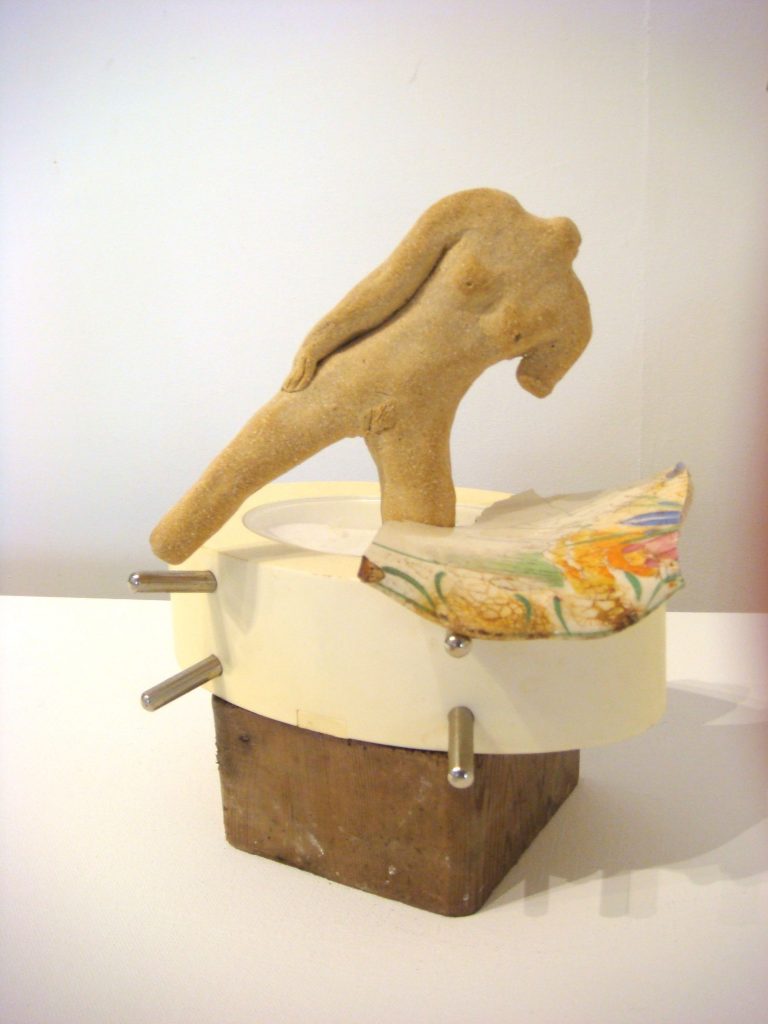
Small sculptures have been shown and sold individually as well as part of a larger installations. Made from found objects combined with small stoneware figures they juxtapose ideas about women, subjectivity and objects. Find them on Instagram @Small Promethean Acts or have a look at more unmonumental small sculptures by downloading the catalogue below:
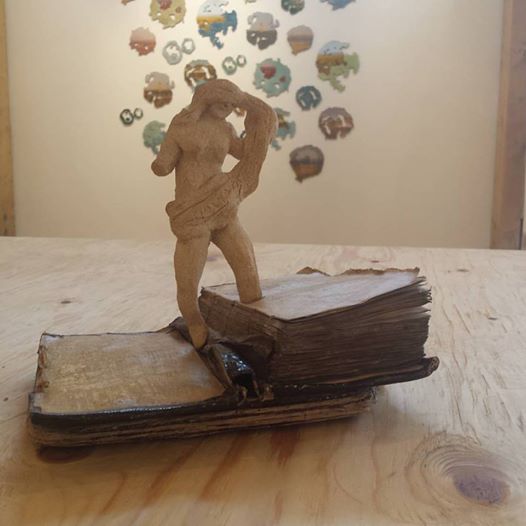
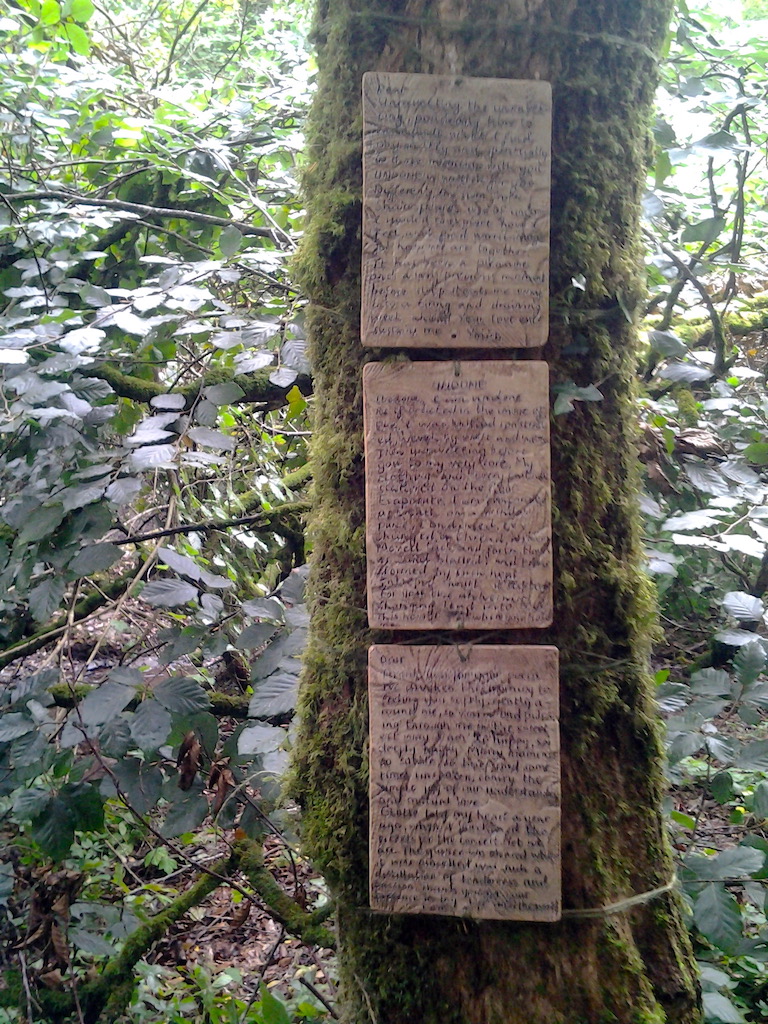
Other sculpture and installation projects include Lover’s Letters, a series of letters and correspondences that were made into tree plaques made for a specific site in the woods at Kestle Barton, Cornwall.
The research and process was recorded in a self-published book. Read more about the project
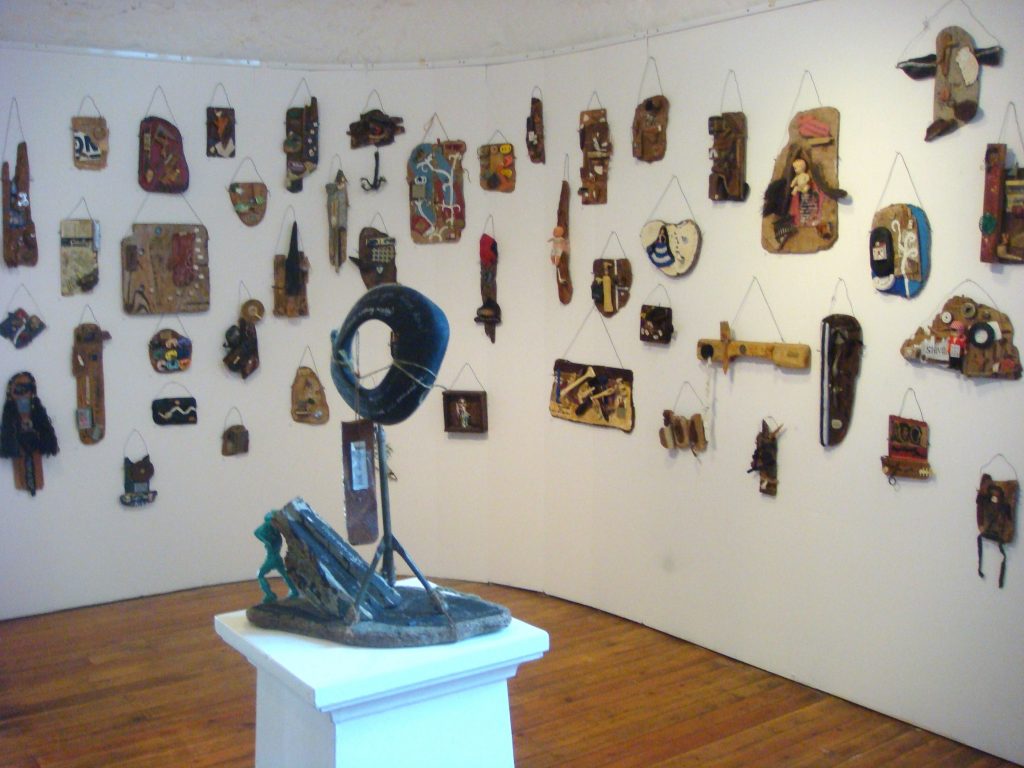
Objets-Textes are small sculptural assemblage works that combine found objects with writing. They propose we ‘think through things’ and explore our relationship with the physical world through stories and objects. There are over 100 small works and they have been shown singly or as installations around the UK between 2006-2013, including the RWA in Bristol . Find out more on Delpha’s archive or read Objets-Textes research or download a to a catalogue of work below:
View more sculpture and installation projects on Delpha’s archive
If you would like to see more sculpture you can arrange to visit Delpha’s studio